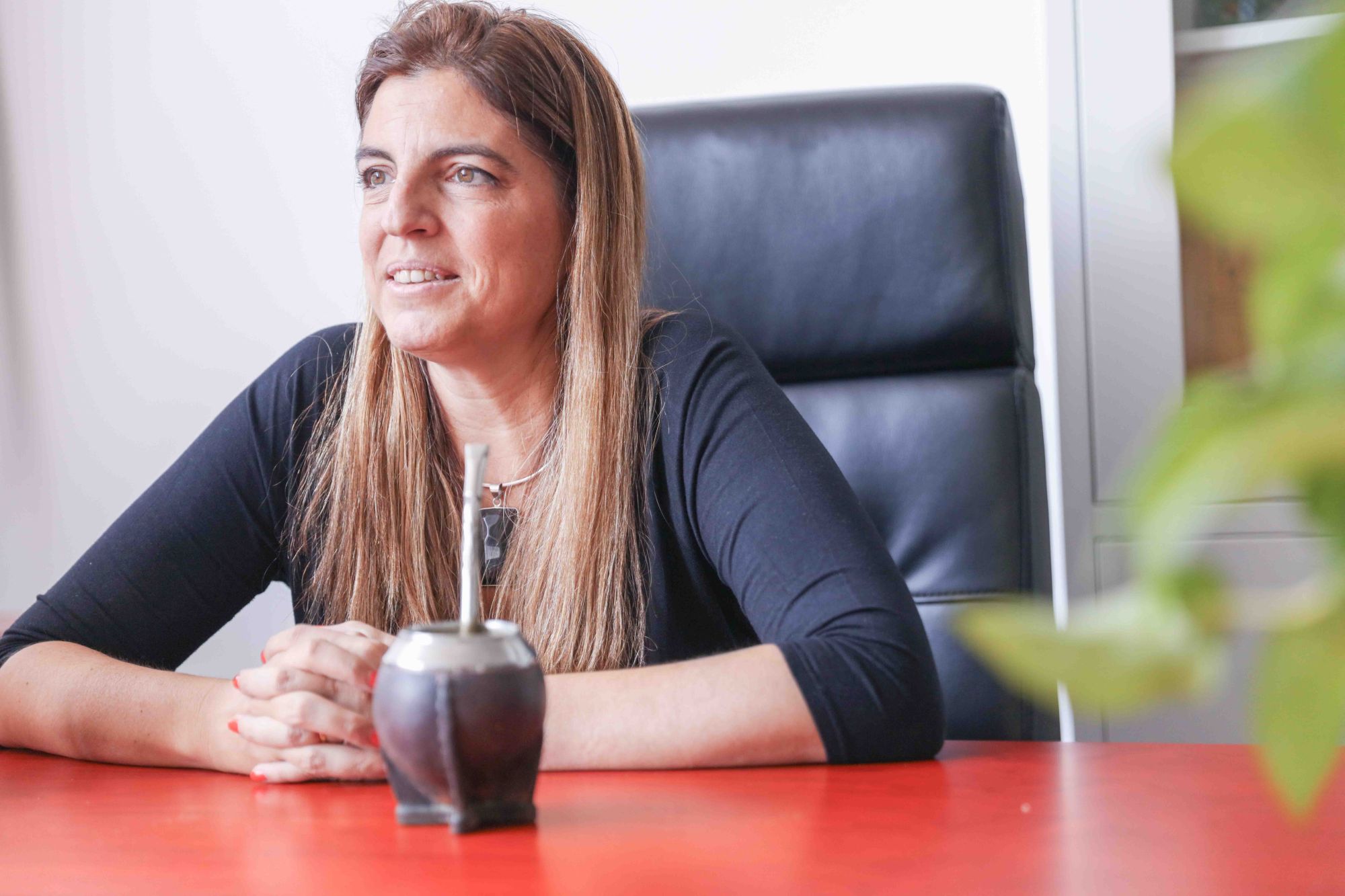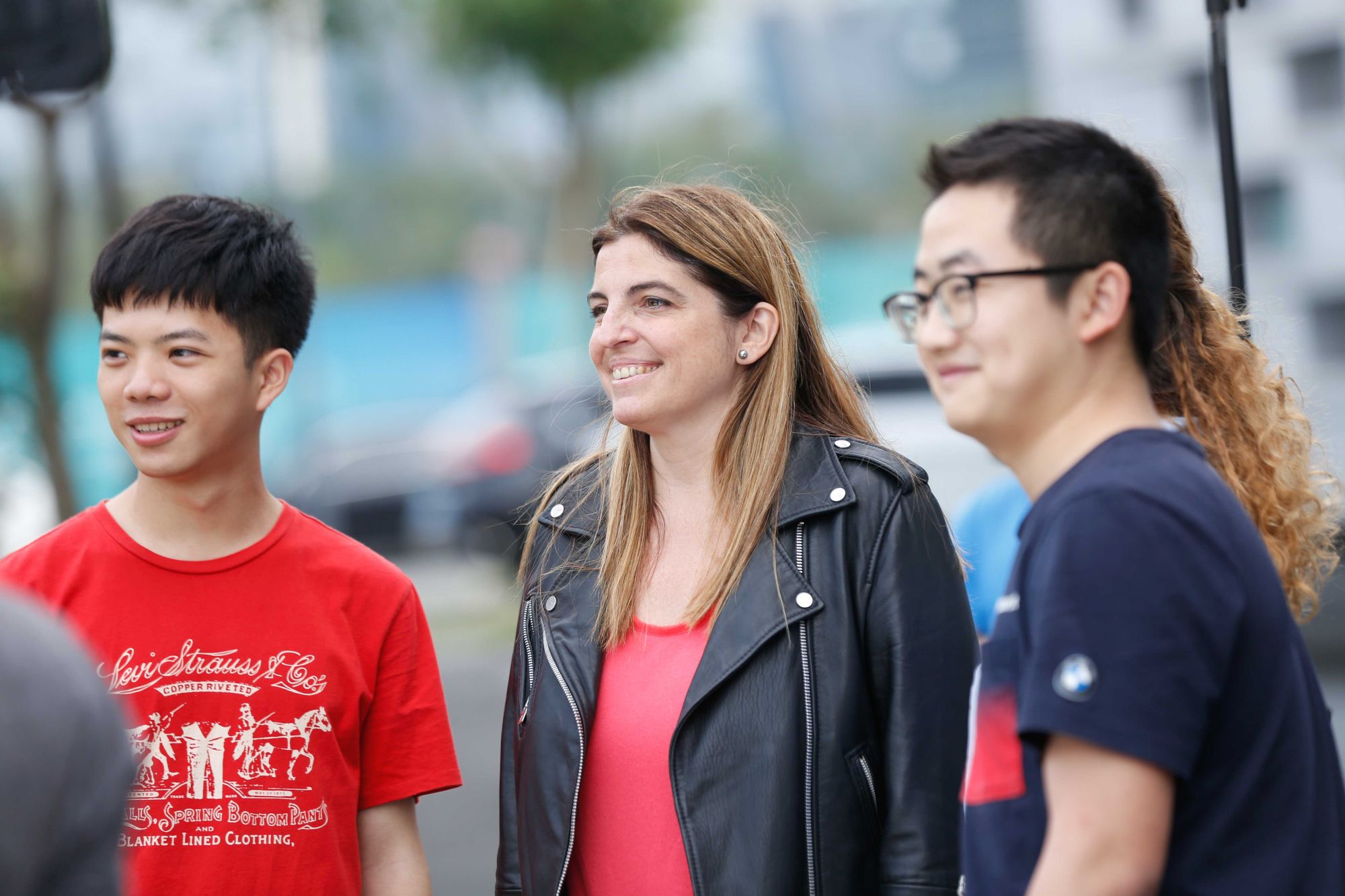When one explores the SUSTech campus, they stumble across individuals who are so brilliant and amazing in what they have achieved in their lives that you can’t help but speak to them. This is absolutely the case with Maria Alejandra Rodríguez Hertz, an Argentinean born professor of mathematics who has done so much that it astounded this author that her accomplishments are not shouted from the rooftops.
We met Professor Hertz in her office days after Typhoon Mangkhut had devastated southern China. Her normal commute of 30 minutes had taken about 2 hours, so we were honored to have the time with her, particularly after this stressful time.

About Professor Hertz
Professor Hertz is a full professor of mathematics from Universidad de la Republica, also known as the University of the Republic, in Uruguay. It is the oldest, largest and most important university in Uruguay. She graduated from Universidad Nacional de Rosario, or the National University of Rosario in Argentina, where she was born, before moving to Uruguay to complete her Ph.D. She completed her Ph.D. in 1999 at the University of the Republic and continued to work there, moving through the ranks from Assistant Professor to Full Professor. In 2016, Prof. Hertz decided to take a chance and moved to Shenzhen to take up a tenured position here at SUSTech.
Prof. Hertz’ major research focus is dynamical systems, and her small area is partially hyperbolic dynamics. She explains dynamical systems as trying to model physical phenomena like climate. The main focus is on chaotic systems that are difficult to predict and trying to quantify what is going on. She had no noted mathematical idols and professed that she followed the traditional set of scientific idols that most scientists tend to follow. However, Prof. Hertz did comment that at the age of 15, it was clear to her that she wanted to become a mathematician, even though it was never thought to be a job with which to make a living.
We were curious about what it was at 15 years old that made Prof. Hertz want to become a mathematician. She explained that she liked abstract things, and when she learned about polynomials at 15 years old, she got upset. She couldn’t understand them, but she could understand the logic behind them. “It was kind of strange, but I understood the language, and it was very easy for me. I wanted more, and the more I learned, the more I wanted to learn, so this is what I decided to study.”
Amazing Achievements
People don’t realize the amount of success Prof. Hertz has had in her career. In 2016, she became the Vice President for the Organization for Women in Science in the Developing World (OWSD) for Latin America and the Caribbean, an organization that works closely with UNESCO.
When people feel about mathematicians, they have traditionally thought about them being men. We asked if this created any extra pressure for her and Prof. Hertz demurred, saying that she felt it created more of a challenge for her.
“In Uruguay, I am the only female full professor of maths in Uruguayan history, so far. I’m the only one, as far as I know.”
The interview stopped for a few moments at that point, considering such an idea. However, Prof. Hertz does not feel any intimidation from her position as a pioneer.
When preparing for this interview, we wondered about when scientists believe they have succeeded. However, Prof. Hertz believes that she has succeeded. “I consider myself a happy person, and I consider that a success.”
Organization for Women in Science in the Developing World (OWSD)
Prof. Hertz felt that this was an enormous honor, and the opportunity to travel and meet female scientists from all over the world is something that is important to her. In October, she is due to travel to India for an executive board meeting.
She takes this honor as another challenge, but an interesting one. Prof. Hertz views her position as a network builder, connecting women in science across Latin America and the Caribbean. One of the challenges of Latin America is that it is a very heterogeneous area, with a mix of scientifically developed countries and less developed countries. It’s not just scientific development that is a challenge but improving access for women in science in those countries as well. It’s important to build those networks so women in science can support each other.
We discussed why women scientists tend towards biology and chemistry, instead of mathematics and engineering. She didn’t know why biology and chemistry were considered as “female” fields, and why mathematics and engineering are “male” fields.
Simons Associateship School in Trieste
Over the summer break, Prof. Hertz spent time in Trieste, in north-eastern Italy. This has been part of her Simons Associateship with the International Center for Theoretical Physics (ICTP) that runs until next year. Every year she travels to Trieste to teach at their school. Last year she taught a class with fellow mathematicians Amy Wilkinson, Corinna Ulcigrai and Stefano Luzzatto. They had 400 applications from all over the world for 100 places, making it extremely hard to choose the successful applicants.
The ICTP Center is designed to help people from undeveloped and developing countries to increase their knowledge of science. “There were so many women there, particularly from Africa and Asia that you wouldn’t normally see at European conferences.” She was thrilled to not only run this class but have the work interaction with people from every continent
Challenges for Women in Science
One thing that Prof. Hertz commented on was a lack of knowledge, but that is starting to change, and women are becoming more aware. “But when I began trying to do some Women in Maths Groups in Uruguay, the first problem I faced was that the young women thought there was no problem.” When they were starting their careers, the gender split would be 50/50, but that changes over time as people start moving up in their careers, they find that that is no longer the case, with Prof. Hertz being a prime example. It also meant that there are no women in decision making positions, to fight for fellow female scientists.

How to Encourage Women in Developing Countries into Science
It is important for all societies to have people involved in STEM subjects, so we wanted to know some of Prof. Hertz’ ideas to encourage women in developing countries to get into the sciences. She had several ideas, including approachable role models, and getting female scientists into schools. Both of those ideas require a lot of time, something that scientists don’t always have since they can be overwhelmed with all their other obligations.
One suggested project was having school students create and edit Wikipedia pages. It would teach new skills, in terms of coding Wikipedia pages, but also requires the students to interview and research scientists. In the Spanish language pages, approximately 20% of female scientists have pages created for them.
Projects like Girls in Tech also attract Prof. Hertz’ attention, as well as encouraging female students to participate in the various academic Olympiads. She was convinced that the boy’s self-confidence outweighed many girl’s self-confidence, so if girls were encouraged to try in the same way that boys will try anyway, without the fear of doing badly, this could see more women in science.
As a pioneer and reformer of higher education in China, SUSTech could take a bigger role in encouraging girls to take up scientific subjects. Prof. Hertz believed that having students studying and meeting female scientists would certainly help. She also argued that teaching students what a scientist’s life can actually be like, instead of the stereotype.
“We travel a lot, we have fun, we make and meet friends from all over the world, we study what we like, and our schedule is very flexible. These are all things that the students don’t know.” Prof. Hertz acknowledged that there are cultural expectations from parents about what their children will do in the future and becoming a scientist does not traditionally fall within that set of expectations.
Message for Future Female Scientists
Don’t Give Up!